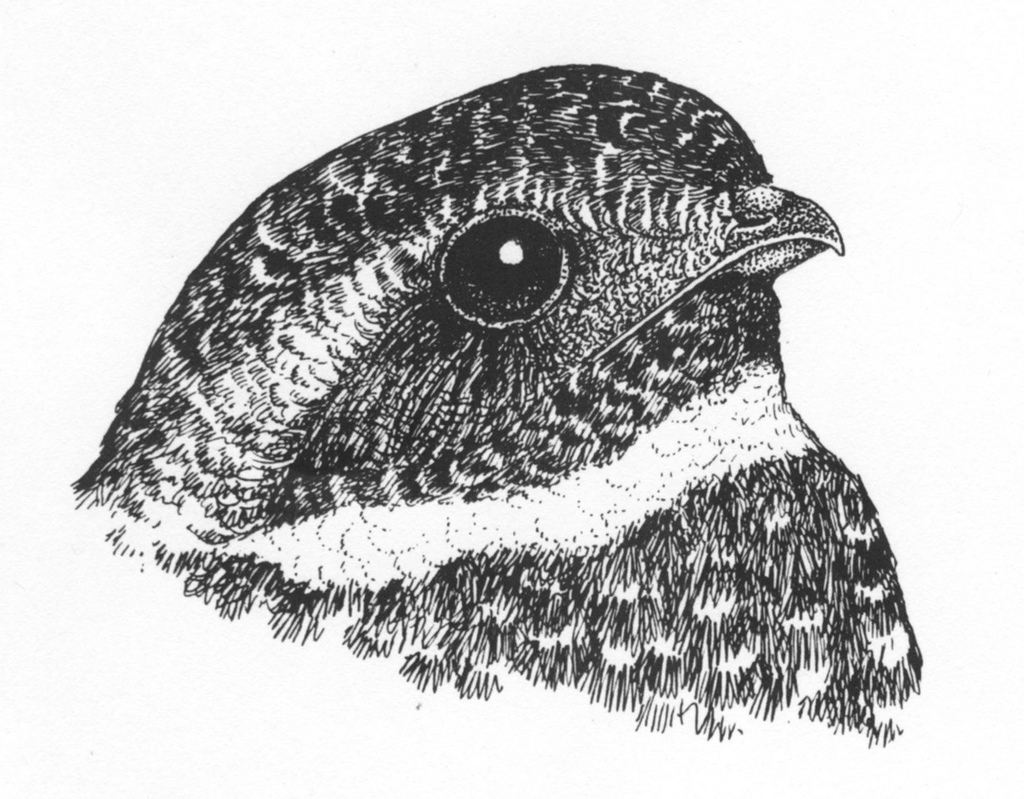56. Make flat roofs nighthawk-friendly.

As soon as Americans constructed their first permanent buildings, nighthawks and swifts moved in. On flat rooftops, nighthawks feel safe from most predators, and rock-ballasted flat roofs are quite similar in look and feel to the bare ground on their natural nesting sites. The Common Nighthawk is declining over much of its range, apparently suffering from predation by a burgeoning population of crows and gulls, a reduction in the urban population of mayflies and other fairly large emergent aquatic insects (an important food source during migration and the nesting season), and changes in flat roof construction. I’ve heard of bird banders handling nighthawks with blistered feet, probably caused by landing on roofs with these newer designs. The solid roof color makes these normally camouflaged birds more conspicuous, and the smooth surface may permit eggs to roll. Mark Alt, president of the Minnesota Ornithologists’ Union, has devoted some time to studying different roof types and their suitability for nighthawks. He describes four basic types of flat roofs:
- A built-up roof is made by pouring a blend of hot asphalt and rubber over a roof and letting it set. This kind of roof can get extremely hot, so it is unsuitable and even dangerous for wildlife.
- A rock-ballasted roof consists of tar paper or a rubber membrane held in place by the weight of rocks, usually smaller than baseballs. Alt notes that the surface resembles a dry riverbed or rocky lakeshore. In addition to Common Nighthawks, Killdeer and Forster’s Terns can safely nest on this kind of roof.
- PVC membrane roofs are constructed of plastic sheeting glued into place. This plastic is usually white, and its smooth surface and high reflectivity make it overly warm and subject to wind.
- Sheet metal reflective roofing, with its mirrorlike finish, produces dangerous glare and heat.
Fortunately, cities are increasingly looking at rooftops as potential green spaces. Vegetation on rooftops can help reduce urban temperatures, produce oxygen, and absorb pollutants. If you live or work in a building with a flat roof, consider getting involved in the process of converting the roof to green space. Also take the needs of nighthawks into account. If making the rooftop a green one isn’t possible, advocate for rock-ballasted roofing. On either green roofs or non-rock-ballasted roofs, placing gravel pads in the corners may create suitable nesting areas for nighthawks.

[UPDATE] Crows can learn to recognize gravel pads as places where they can pick up nighthawk chicks. And if nighthawk chicks wander off the gravel pad on a roof that gets excessively hot, they may burn their feet.
From 101 Ways to Help Birds, published by Stackpole in 2006. Please consider buying the book to show that there is a market for bird conservation books. (Photos, links, and updated information at the end of some entries are not from the book.)